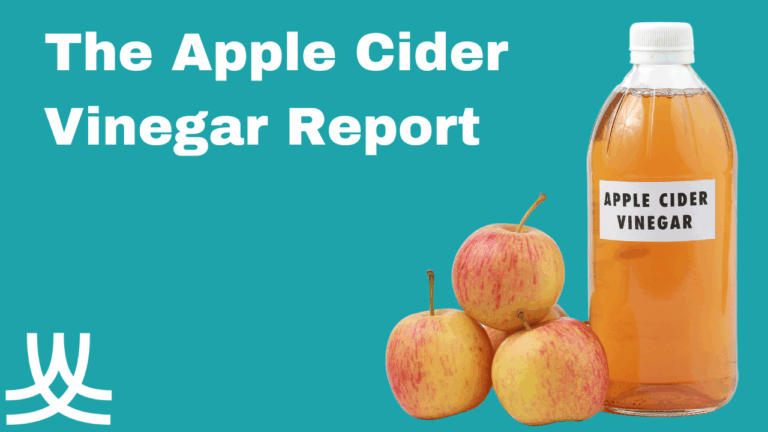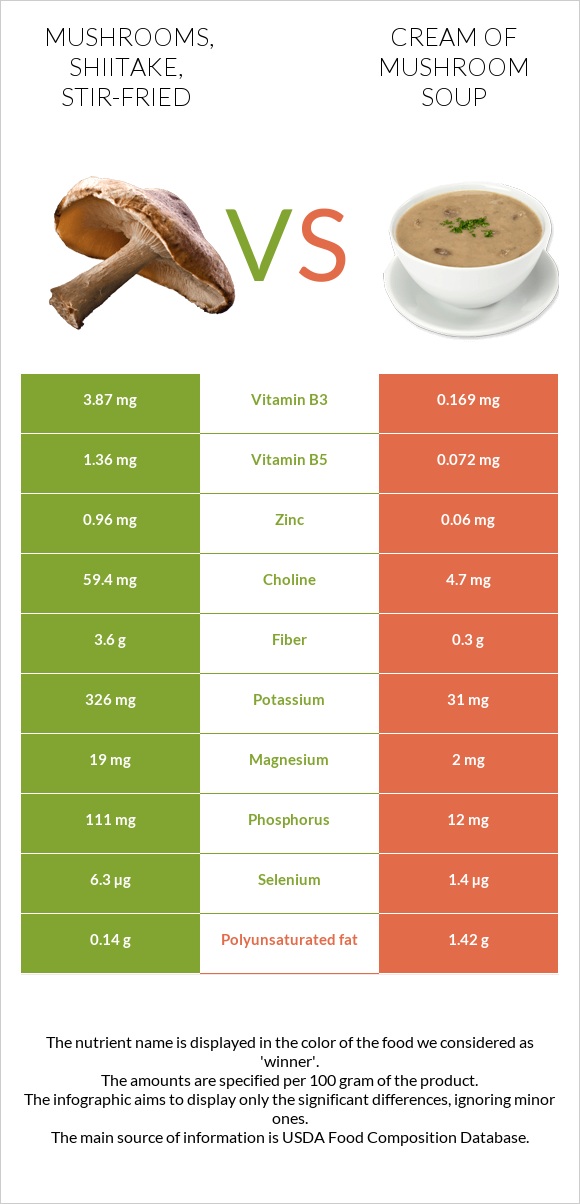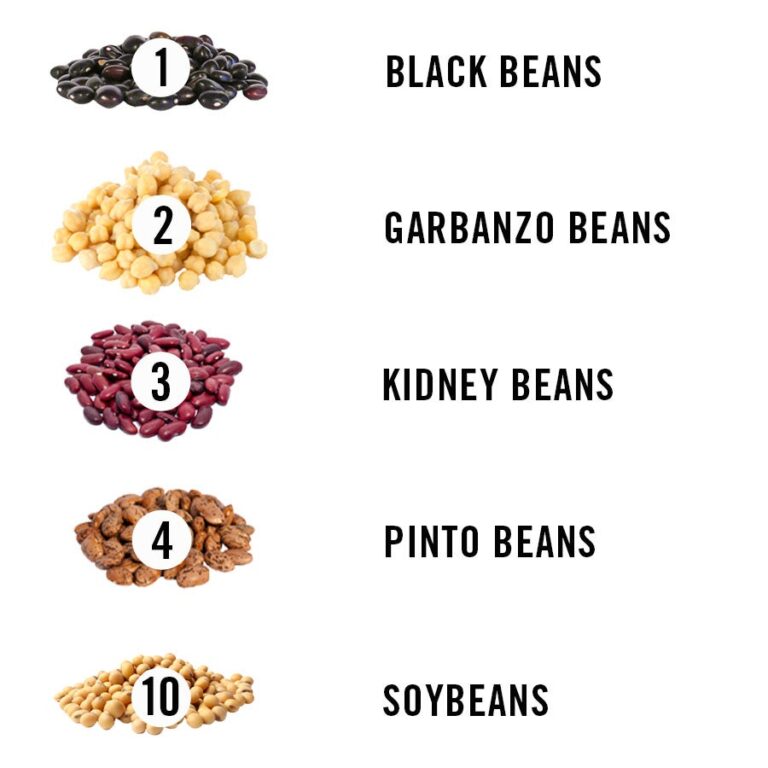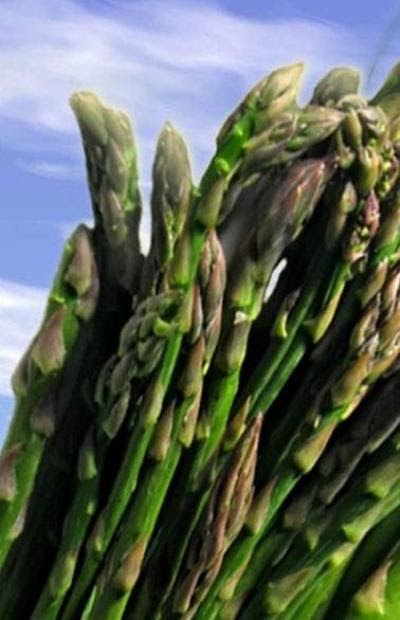The Emerald Spear: Unveiling Asparagus as a Sentinel Against Free Radicals and Inflammation
There are certain harbingers of spring that transcend mere seasonal indicators, becoming instead symbols of renewal, vitality, and the earth’s profound generosity. Among these, the slender, verdant spears of asparagus stand tall, emerging from the thawing soil with an almost defiant elegance. For millennia, humanity has savored its delicate flavor, a subtle blend of earthiness and sweetness, making it a culinary delight from ancient Roman feasts to modern gourmet tables. Yet, beneath this familiar, delicious exterior lies a complex and potent arsenal, a biochemical fortress meticulously designed by nature to protect and nourish. This is not merely a vegetable; it is a powerhouse, an emerald sentinel actively engaged in a tireless battle against the invisible forces that undermine our health: free radicals and chronic inflammation.
To truly appreciate the profound impact of asparagus, we must embark on a journey that delves beyond the plate and into the intricate world of cellular biology, historical reverence, and modern nutritional science. We will peel back the layers of this humble spear, revealing its sophisticated mechanisms, its diverse compounds, and the compelling story of how it stands as a formidable ally in the pursuit of longevity and robust well-being. Our audience, knowledgeable and discerning, understands that true health is often found not in exotic supplements, but in the intelligent embrace of nature’s most fundamental offerings.
An Ancient Pedigree, a Timeless Promise: Asparagus Through the Ages
The story of asparagus is as rich and layered as its nutritional profile. Its origins trace back to the eastern Mediterranean, where it was not only consumed for sustenance but also revered for its purported medicinal properties. The ancient Egyptians depicted it on their monuments, indicating its esteemed status. The Greeks, particularly the physician Hippocrates, recognized its diuretic qualities, suggesting its use for various ailments. But it was the Romans who truly elevated asparagus to a culinary art form, cultivating it extensively and developing sophisticated methods to harvest and prepare it. The Roman emperor Augustus was so fond of it that he established an "asparagus fleet" to transport it swiftly, uttering the famous phrase, "Velocius quam asparagi coquantur" – "quicker than you can cook asparagus" – a testament to its prized status and rapid cooking time.
Throughout the Middle Ages, its popularity waned somewhat in Europe, often being cultivated primarily in monastic gardens for medicinal purposes. However, it experienced a grand resurgence during the Renaissance, particularly in France, where King Louis XIV, known as the "Sun King," was so enamored with it that he had special greenhouses built to cultivate it year-round. This historical trajectory is not merely anecdotal; it underscores a deep, intuitive human understanding, passed down through generations, that this particular plant offered something more than just flavor. While our ancestors may not have articulated it in terms of "antioxidants" or "cytokines," they recognized its capacity to invigorate, to cleanse, and to promote vitality.
Today, asparagus is cultivated globally, with various types gracing our tables: the familiar green spears, the blanched white variety (prized in Europe), and the less common, sweeter purple asparagus. Each variant, while sharing a core nutritional identity, offers subtle differences in flavor and perhaps even in their specific phytochemical concentrations, influenced by sunlight exposure and cultivation methods. This ancient legacy, coupled with its enduring presence in diverse cultures, sets the stage for our deeper exploration into its modern scientific validation as a true nutritional powerhouse.
Deconstructing the Powerhouse: The Antioxidant Arsenal of Asparagus
To grasp the full significance of asparagus as an "Antioxidant Powerhouse," we must first understand the enemy it so effectively combats: free radicals and the resulting oxidative stress. Imagine your body’s cells as miniature factories, constantly performing countless biochemical reactions. During these processes, highly unstable molecules called free radicals are inevitably produced. These molecules are missing an electron, making them desperate to steal one from stable molecules in their vicinity, thereby damaging cellular components like DNA, proteins, and cell membranes. This cascade of damage is known as oxidative stress, and it is a major contributing factor to aging and the development of chronic diseases, including cardiovascular disease, neurodegenerative disorders, certain cancers, and metabolic syndrome.
Enter antioxidants, nature’s bodyguards. These benevolent molecules possess an extra electron they can donate to neutralize free radicals, stopping the damaging chain reaction before it can wreak havoc. And asparagus, as it turns out, is teeming with these protective agents, working in a sophisticated symphony to shield our cells.
Let’s delve into the specific components of this emerald arsenal:
-
Flavonoids: Among the most prominent antioxidant compounds in asparagus are flavonoids, a diverse group of plant pigments known for their powerful free-radical scavenging abilities.
- Quercetin: This well-researched flavonoid is abundant in asparagus. Quercetin is a potent antioxidant, capable of directly neutralizing various types of free radicals. Beyond its direct antioxidant action, it also plays a crucial role in chelating metal ions (like iron and copper), which can catalyze free radical formation, thus preventing oxidative damage indirectly.
- Kaempferol: Another significant flavonoid found in asparagus, kaempferol works synergistically with quercetin. It exhibits strong antioxidant activity and has been studied for its potential neuroprotective and anti-cancer properties, often attributed to its ability to modulate cellular signaling pathways involved in oxidative stress.
- Isorhamnetin: While less talked about than quercetin, isorhamnetin also contributes to the antioxidant capacity of asparagus. It is a methylated derivative of quercetin, suggesting similar, if not enhanced, biological activities, including radical scavenging and anti-inflammatory effects.
-
Polyphenols (General): Beyond specific flavonoids, asparagus contains a broader spectrum of phenolic acids and other polyphenols. These compounds are characterized by multiple hydroxyl groups attached to aromatic rings, which allow them to donate electrons and stabilize free radicals effectively. Their collective presence contributes significantly to the overall antioxidant potential of the vegetable.
-
Vitamins with Antioxidant Prowess:
- Vitamin C (Ascorbic Acid): A classic water-soluble antioxidant, Vitamin C directly neutralizes free radicals in aqueous environments within the cell. It also plays a vital role in regenerating other antioxidants, such as Vitamin E, further amplifying the body’s protective capacity.
- Vitamin E (Alpha-Tocopherol): This fat-soluble antioxidant is crucial for protecting cell membranes from oxidative damage. It intercepts lipid peroxyl radicals, preventing the chain reaction of lipid peroxidation that can compromise cell integrity. Asparagus provides a meaningful contribution to daily Vitamin E intake.
- Beta-carotene (Pro-Vitamin A): A powerful carotenoid, beta-carotene is not only converted into Vitamin A (essential for vision and immune function) but also acts as an antioxidant in its own right, particularly in lipid-rich environments. It is especially effective at quenching singlet oxygen, a highly reactive form of oxygen that can cause significant cellular damage.
-
Glutathione: The "Master Antioxidant": Perhaps one of the most remarkable aspects of asparagus’s antioxidant profile is its contribution to glutathione, often dubbed the body’s "master antioxidant." Glutathione is a tripeptide composed of three amino acids: cysteine, glutamic acid, and glycine. It plays a central role in detoxification processes, immune function, and directly neutralizing a wide range of free radicals. Asparagus is one of the richest dietary sources of glutathione itself, and its other sulfur-containing compounds (which we’ll discuss further) may also support the body’s endogenous production of this critical molecule. By providing both direct glutathione and precursors, asparagus acts as a dual-action support system for this vital cellular defense.
-
Saponins: While often recognized for their cholesterol-lowering properties, saponins also possess antioxidant and anti-inflammatory activities. These naturally occurring glycosides contribute to the overall phytochemical complexity and protective capacity of asparagus, adding another layer to its multi-faceted defense system.
-
Trace Elements as Cofactors: Beyond organic compounds, asparagus also provides essential trace minerals that act as cofactors for the body’s endogenous antioxidant enzyme systems.
- Selenium: A vital component of glutathione peroxidase, one of the most important antioxidant enzymes in the body.
- Manganese: Essential for superoxide dismutase (SOD), another crucial enzyme that converts harmful superoxide radicals into less damaging molecules.
- Zinc: A cofactor for SOD and involved in various aspects of immune function and DNA repair, all of which are linked to combating oxidative stress.
The synergistic interplay of these numerous compounds means that the antioxidant power of asparagus is far greater than the sum of its individual parts. It’s a holistic defense system, meticulously assembled by nature, providing a broad spectrum of protection against various forms of oxidative damage.
Beyond Antioxidants: The Anti-Inflammatory Symphony of Asparagus
While antioxidants are crucial for neutralizing free radicals, their role often overlaps with another fundamental aspect of health: managing inflammation. Inflammation, in its acute form, is a vital protective response, signaling the immune system to repair injury or fight infection. However, when inflammation becomes chronic – a persistent, low-grade immune response – it transforms into a silent, insidious threat, contributing to nearly every major chronic disease, including heart disease, diabetes, arthritis, autoimmune conditions, and neurodegenerative disorders. Asparagus, with its rich phytochemical profile, orchestrates a powerful anti-inflammatory symphony within the body.
Here’s how asparagus acts as a natural anti-inflammatory agent:
-
Cytokine Modulation: At the heart of chronic inflammation are pro-inflammatory cytokines, signaling molecules like Tumor Necrosis Factor-alpha (TNF-α), Interleukin-1 beta (IL-1β), and Interleukin-6 (IL-6). Asparagus compounds, particularly its flavonoids and other polyphenols, have been shown in various studies to modulate the production and activity of these cytokines. By dampening the expression of these inflammatory mediators, asparagus helps to quell the systemic inflammatory response, preventing the escalation of chronic inflammation.
-
NF-κB Pathway Inhibition: Nuclear Factor kappa-light-chain-enhancer of activated B cells (NF-κB) is a protein complex that controls the transcription of DNA, cytokine production, and cell survival. It is a master regulator of inflammation; when activated, it triggers the expression of numerous pro-inflammatory genes. Research suggests that compounds in asparagus can inhibit the activation of the NF-κB pathway. By blocking this central inflammatory switch, asparagus helps to reduce the cellular machinery responsible for generating and sustaining inflammation.
-
COX and LOX Inhibition: The enzymes cyclooxygenase (COX) and lipoxygenase (LOX) are key players in the production of prostaglandins and leukotrienes, respectively – potent inflammatory mediators derived from fatty acids. Many non-steroidal anti-inflammatory drugs (NSAIDs) work by inhibiting COX enzymes. While not as potent as pharmaceutical drugs, certain compounds in asparagus, including its flavonoids, have demonstrated mild COX and LOX inhibitory activity. This natural modulation can contribute to reducing pain and swelling associated with inflammatory conditions without the side effects often linked to synthetic inhibitors.
-
Asparagusic Acid and Sulfur Compounds: The unique, often pungent, sulfur compounds in asparagus (including asparagusic acid and its derivatives) are not just responsible for the distinctive odor some people experience after consumption; they also contribute to its biological activity. These organosulfur compounds possess antioxidant and anti-inflammatory properties, and some research suggests they may play a role in supporting detoxification pathways in the liver, which are intimately linked to managing inflammation and overall cellular health. They contribute to the overall "bitter" notes that often signal potent plant compounds.
-
Fiber and Gut Health: Asparagus is an excellent source of dietary fiber, particularly insoluble fiber. While not directly an anti-inflammatory compound, fiber plays a crucial indirect role in modulating systemic inflammation. A healthy gut microbiome, fostered by a fiber-rich diet, produces short-chain fatty acids (SCFAs) like butyrate, which have potent anti-inflammatory effects on the gut lining and can influence immune responses throughout the body. By promoting a balanced gut environment, asparagus contributes to reducing gut-derived inflammation, which is increasingly recognized as a significant driver of chronic systemic inflammation.
-
Regulation of Inflammatory Enzymes: Beyond NF-κB, other enzymes like inducible nitric oxide synthase (iNOS) are involved in inflammatory processes. Compounds in asparagus have been shown to downregulate the expression of iNOS, further reducing the production of nitric oxide, which can contribute to inflammatory damage at high concentrations.
The combined action of these mechanisms paints a picture of asparagus as a sophisticated anti-inflammatory agent. It doesn’t just put out isolated fires; it addresses the underlying cellular pathways and systemic conditions that fuel chronic inflammation, offering a comprehensive, natural approach to maintaining immunological balance.
The Synergistic Effect: A Holistic Approach to Wellness
One of the most profound lessons in nutritional science is the concept of synergy. We often dissect foods into their individual components – "Vitamin C," "Quercetin," "Fiber" – and while this reductionist approach is useful for understanding specific mechanisms, it often misses the larger picture. In nature, nutrients rarely act in isolation. Instead, they operate within a complex matrix, a "phytocomplex," where hundreds, if not thousands, of compounds interact, often enhancing each other’s bioavailability, stability, and biological activity.
Asparagus is a prime example of this food synergy. Its array of flavonoids, vitamins, minerals, saponins, and unique sulfur compounds don’t just add up; they multiply each other’s effects. Quercetin might work better in the presence of Vitamin C, which might regenerate Vitamin E, while specific enzymes enhance the absorption of other polyphenols. The fiber creates a healthy gut environment that optimizes the metabolism of these compounds and reduces systemic inflammation, which in turn improves overall cellular resilience against oxidative stress.
This holistic approach is why consuming whole asparagus is inherently superior to relying on isolated supplements. While a supplement might offer a concentrated dose of one or two compounds, it inevitably lacks the intricate network of cofactors, synergistic partners, and beneficial fibers that make the whole food so powerful. The "story" of asparagus’s health benefits is not a single narrative, but a grand epic with countless interwoven plotlines, each contributing to a triumphant conclusion of enhanced health and protection.
Scientific Validation and the Promise of Emerging Research
The claims about asparagus’s antioxidant and anti-inflammatory prowess are not mere folk remedies or anecdotal observations; they are increasingly supported by a growing body of scientific research.
- In vitro studies (test-tube experiments) have repeatedly demonstrated the direct free-radical scavenging abilities of asparagus extracts and isolated compounds, as well as their capacity to inhibit inflammatory pathways in cell cultures.
- In vivo studies (animal models) have shown that diets enriched with asparagus or its components can reduce markers of oxidative stress and inflammation, improve lipid profiles, protect organs from damage, and even inhibit tumor growth in some cancer models. For example, studies have shown asparagus extracts reducing oxidative stress in the liver and kidneys, and mitigating inflammation in models of colitis.
While human dietary intervention studies are notoriously complex due to countless variables, the existing epidemiological evidence and preliminary clinical trials are highly promising. Researchers are actively investigating asparagus’s potential in areas such as:
- Cardiovascular Health: By reducing oxidative stress on endothelial cells (the lining of blood vessels) and mitigating systemic inflammation, asparagus may contribute to healthier blood vessels, reduced plaque formation, and improved cardiovascular function.
- Neuroprotection: Chronic neuroinflammation and oxidative stress are implicated in neurodegenerative diseases like Alzheimer’s and Parkinson’s. The potent antioxidants and anti-inflammatory compounds in asparagus offer a compelling avenue for research into brain health and cognitive preservation.
- Cancer Prevention: The ability of asparagus compounds to induce apoptosis (programmed cell death) in cancer cells, inhibit cell proliferation, and modulate inflammatory pathways makes it a subject of ongoing interest in chemoprevention research.
- Blood Sugar Regulation: Beyond its fiber content, some compounds in asparagus have shown potential to improve insulin sensitivity and help regulate blood glucose levels, offering benefits for individuals managing diabetes or metabolic syndrome.
- Gut Microbiome Modulation: Its prebiotic fiber content not only feeds beneficial gut bacteria but also influences the entire gut-brain axis, impacting immunity, mood, and systemic inflammation.
The journey of scientific discovery is ongoing, but the trajectory of research consistently reinforces what ancient wisdom intuitively understood: the emerald spear holds immense power. Each new study further illuminates the intricate mechanisms through which this humble vegetable contributes to our well-being, solidifying its status as a functional food of exceptional merit.
Incorporating Asparagus into a Health-Conscious Lifestyle
Understanding the scientific rationale behind asparagus’s benefits is one thing; integrating it effectively into our daily lives is another. For the knowledgeable audience, the practical application of this wisdom is key.
Selection and Storage:
To maximize its antioxidant and anti-inflammatory potential, choose fresh, vibrant asparagus. Look for firm, bright green (or purple/white, depending on variety) spears with tightly closed, compact tips. Avoid spears that are limp, shriveled, or have open, flowering tips, as these indicate older produce with diminished nutritional value. For optimal freshness, store asparagus upright in a glass with an inch of water, covering the tips loosely with a plastic bag, in the refrigerator. This method can keep it fresh for up to a week.
Cooking Methods and Nutrient Retention:
The way we prepare asparagus significantly impacts its nutrient profile. While some nutrients are sensitive to heat, others become more bioavailable.
- Steaming: A gentle method that preserves most water-soluble vitamins (like Vitamin C) and many delicate phytonutrients. Steaming for 3-5 minutes until crisp-tender is ideal.
- Grilling/Roasting: These methods, especially with a light coating of olive oil (which aids in the absorption of fat-soluble vitamins like E and beta-carotene), can enhance flavor while largely preserving nutrient content. High heat for short durations is key to avoid overcooking.
- Blanching: Briefly submerging in boiling water followed by an ice bath helps retain color and some nutrients, often used as a prep step for other dishes.
- Raw: While less common, thinly shaved raw asparagus can be added to salads, offering a unique texture and preserving all heat-sensitive compounds.
The overarching principle is to avoid overcooking, which can leach water-soluble vitamins and degrade heat-sensitive antioxidants. Aim for crisp-tender texture, which signals optimal nutrient retention and enjoyable eating.
Culinary Versatility:
Asparagus’s subtle flavor makes it incredibly versatile.
- Simple Side Dish: Roasted with garlic and a squeeze of lemon.
- Salads: Chopped or shaved, raw or blanched, adding crunch and freshness.
- Pasta Dishes: Integrated into light spring pasta sauces.
- Soups and Stir-fries: A natural fit for adding vibrant color and nutrients.
- Omelets and Frittatas: A classic pairing for a nutritious breakfast or brunch.
- As a "Vessel": Wrapped in prosciutto and grilled, or dipped in a healthy homemade aioli.
By incorporating asparagus regularly into meals, we consciously choose to equip our bodies with a powerful, natural defense system, making informed dietary decisions that resonate with both ancient wisdom and modern science.
Conclusion: Embracing the Emerald Powerhouse
As our journey through the emerald spear draws to a close, we are left with a profound appreciation for a vegetable that is far more than just a seasonal delicacy. Asparagus, with its ancient roots and contemporary scientific validation, stands as a testament to nature’s intricate design and boundless generosity. It is a formidable "Antioxidant Powerhouse," diligently fighting the relentless tide of free radicals that threaten our cellular integrity, and a sophisticated anti-inflammatory agent, meticulously orchestrating a symphony of biochemical pathways to quell the fires of chronic disease.
The story of asparagus is one of complex chemistry harmonizing with simple elegance. From the potent flavonoids like quercetin and kaempferol to the vital vitamins C, E, and beta-carotene, and the crucial master antioxidant glutathione, each component plays a vital role. Furthermore, its unique sulfur compounds and essential fiber work in concert to modulate inflammation, support detoxification, and nurture a healthy gut microbiome, reinforcing the synergistic power of whole foods.
For the knowledgeable among us, this understanding transforms a simple culinary choice into a deliberate act of self-care, a conscious embrace of nature’s inherent wisdom. As we savor the delicate crunch and distinct flavor of asparagus, we are not just enjoying a meal; we are engaging with a living sentinel, a guardian of our health, providing our bodies with the tools they need to thrive. In a world increasingly complex, the emerald spear reminds us that true power often resides in the unassuming, the natural, and the timeless. Let us continue to honor and incorporate this magnificent vegetable, allowing its quiet strength to empower our journey towards sustained vitality and well-being.







